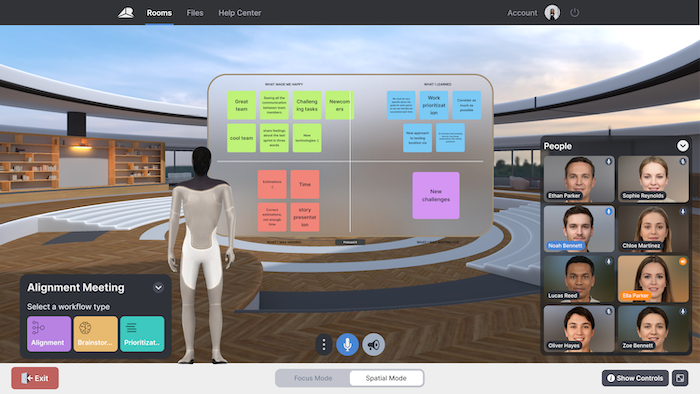Arthur Technologies is a company that specializes in augmented and virtual reality solutions for enterprises with a focus on dynamic collaboration. The company enables users to conduct virtual meetings, share files and information seamlessly, and export the results with ease.
Pulse 2.0 interviewed Arthur Technologies founder and CEO Christoph Fleischmann to gain a deeper understanding of the company.

Q.) What is your background?
A.) I grew up in the south of Austria and was amazed from an early age by technology that can bring people closer together and accelerate our output. That curiosity pulled me into emerging fields from AI to XR and ultimately led me to found Arthur, a company that combines both.

Q.) How did the idea for the company come together?
A.) “Communication entropy” is the real challenge in organizations when it comes to collaborating on big projects and big visions. It is the natural tendency for important information to splinter, distort, or disappear as it moves through an organization — too many parallel channels, overlapping documents, unclear ownership, and a revolving door of meetings where only a fraction of ideas are captured and even fewer are acted on.
That’s why I set out to build a company that harnesses emerging technologies — AI, XR, and context‑aware digital coworkers — to restore order to that chaos, keep every brilliant idea alive, and turn collaboration from a productivity drain into a force multiplier that dramatically accelerates human output across the entire organization.
Q.) What has been your favorite memory working for the company so far?
A.) Running our own 15‑person strategy session with the first alpha version of our alignment flow feature, powered by our AI meeting facilitator. Our AI agents interviewed everyone in parallel and surfaced agreements, disagreements, and a draft agenda in minutes, proving we were onto something transformational. When reviewing the results of this incredibly simple, but powerful feature, we looked at each other in disbelief and saw that we were on to something. The AI was able to focus our discussion on the most important elements so seamlessly and quickly that we almost could not believe it.
Q.) What are the company’s core products and features?
A.) Arthur Spaces – A 3D immersive space where people and AI agents collaborate in real time.
Arthur Vibe – An asynchronous “chief‑of‑staff” agent that interviews stakeholders ahead of time and returns an actionable report.
Underlying Digital Coworker AI Architecture – Proprietary context‑memory layer plus a scalable agent system that lets AIs perform background tasks and work with humans in real time.
Q.) Have you faced any challenges in your sector of work recently?
A.) Early on, our AI outputs felt generic without deep context, turning it more into a gimmick and less into a helpful co-worker. We built a lightning‑fast memory layer that injects prior meetings, docs, and relevant context into the knowledge of the AI co-worker, all in real time. Our accuracy jumped from “pretty good” to a whole new level of nuance.
Q.) How has the company’s technology evolved since launching?
A.) 2019: Launched our core product Arthur: a real-time interactive 3D space to collaborate
2024: Launched Arthur One. This upgrade introduced digital coworkers into this 3D world.
2025: We began offering those coworkers outside XR via Arthur Vibe, for asynchronous collaboration at scale.
And there is a lot more coming!
Q.) Can you share a customer success story?
A.) Mondelēz International built a virtual innovation center called Simoja on Arthur. Over 1,000 employees now collaborate there; Mondelēz’s 3D concept‑design phase shrank from weeks to hours, and its XR experiences grew 400 % YoY.
Q.) What total addressable market (TAM) size is the company pursuing?
A.) We sit at the intersection of two huge markets:
- Enterprise collaboration — estimated at $54.7 billion in 2024 and projected to exceed $107 billion by 2030. (Source)
- AI productivity tools — about a $13.8 billion market in 2025, forecast to top $109 billion by 2034 (Source)
Both are growing fast because companies increasingly favor AI augmentation over simple automation.”
Q.) What differentiates the company from its competition?
A.) Vertical integration: Best‑in‑class, proprietary enterprise technology connected in a single, enterprise‑ready user experience.
Real‑time human⇄AI interaction: Scalable, real-time collaboration with any amount of AI processes (active and in background) able to be spun up and supercharged with our context‑memory layer for maximum relevance.
Enterprise DNA: Security, customization, and high‑value workflows integrated from day one.”
Q.) What are some of the company’s future goals?
A.) We’ll soon announce a new product that combines everything we’ve learned from Arthur Spaces and Vibe — potentially our most significant release to date. Stay tuned for that!


